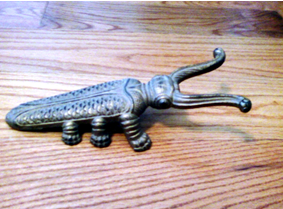|
Francis Marion Scott was my Great, Great Grandfather. He was born on April 5, 1829 in Copiah, Mississippi and he died November 11, 1894 at the age of 65 in Marshall, (Scottsville), Harrison County, Texas. Scott got his name from Francis Marion who was a military officer in the Revolutionary War. Francis Marion was an adversary of the British occupation of South Carolina in 1780 and 1781 and was known as the "Swamp Fox" due to his irregular methods of warfare.
Scott was described as 5' 7" tall with fair complexion and dark eyes. He was listed as a Farmer. Scott married Adalaid Elizabeth Webb January 8, 1850 in Marshall, Texas. They had 3 children. He purchased a parcel of land 6 miles East of Marshall, Texas on what is now State Highway 80. This area came to be known and incorporated as Scottsville, Texas.
After the beginning of the War against Northern Aggression, Scott enlisted in the Confederate Army on May 10, 1862 in Minden, Rusk, County Texas and was assigned to Company H, Texas 19th Infantry Regiment. This was to be known as "Waterhouse's Regiment." His enrollment was for the period "Three Years or the War." Scott was 30 yrs. old when he enlisted. Scott was mustered out on February 11, 1864. Records show that Scott was sick in the hospital in January and February 1863 in Pine Bluff, Ark. Records also indicate that Scott was paid $11.00 per month while in the service of The South.
In June 1862, Colonel Waterhouse received orders to march to Little Rock, Ark. from Brig. General E. McCulloch, commander of all units in Northeast Texas. Both battalions, marching at separate times, reached Camp Josephine McDermott near Rondo, Ark. by August 29. The 19th remained in Rondo for more than a month, during which time an outbreak of measles, dysentery, and diarrhea killed 24 men and necessitated leaving 34 sick behind. Toward the end of 1862, McCulloch's eleven regiments and one battalion from Texas, including the nineteenth, were divided into three brigades and placed under the command of Maj, Gen. John G. Walker where they remained for the duration of the war.
What came to be known as Walker's Texas Division was the largest individual unit of Texas and the only one from either the North or the South consisting of regiments from a single state in the Civil war. In the first months of 1863, Walker's Texas Division was sent from Vicksburg to northwest Arkansas and back again three times before being ordered to central Louisiana on April 23. There the artillery of the Third Brigade exchanged volleys with a gunboat at Perkins' Landing on May 31, which marked the first military engagement witnessed by the Nineteenth – more than a year after mustering. Because of all the marching and countermarching during six months of 1863, which totaled nearly a thousand miles, Walker's Texans acquired the fitting nickname "Greyhound Division."
The first major engagement of the Nineteenth was at Milliken's Bend on the west side of the Mississippi River. They went on to the Red River Campaign, Mansfield, Pleasant Hill, Jenkins' Ferry and others.
Some of my relatives still live today on and around Scott's home place in Scottsville, Texas. A few of the buildings are still standing that Scott used in his farming operation.
The photo below is a Boot Jack, circa; 1865, that belonged to F.M. Scott. This boot jack is one of only a few items I have from him.

|